Japan’s Annual Spider Battle is the Arachnid Equivalent of WWE
Eight-legged wrestling, for your entertainment.

A judge and announcer watch two Kogane spiders at Kajiki’s 2015 Spider Battle. (All Photos: Chad Cullen)

Gauzy webs crowned with large, striped spiders are a familiar sight to anyone who has spent a summer in southern Japan. A less familiar sight is the spider battle, an annual tournament on the country’s southernmost island in which arachnids wrestle one another for human amusement.
In Aira City, citizens ranging from elementary school children to elders buy, capture, or rear female Argiope amoena spiders—called “kogane” locally—and register them for the Kajiki-town spider battle tournament held annually on the third Sunday in June.
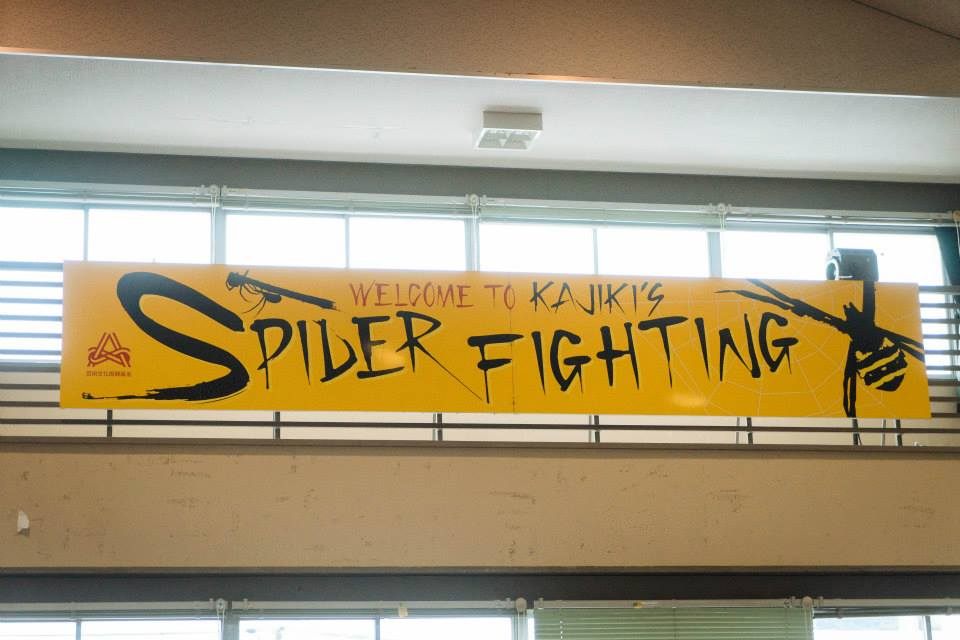
The welcome banner.
According to Aira City’s website, spider battles began in this area in the late 16th century when a local warlord began using them as a way to cheer up his troops during military campaigns to the Korean peninsula.
The modern battles took shape with the help of the Spider Battle Preservation Society, founded in 1991. The day-long event is set up as a tournament, with spiders advancing as they win individual fights. With nearly 200 spiders competing, fights take place simultaneously on three judging platforms.
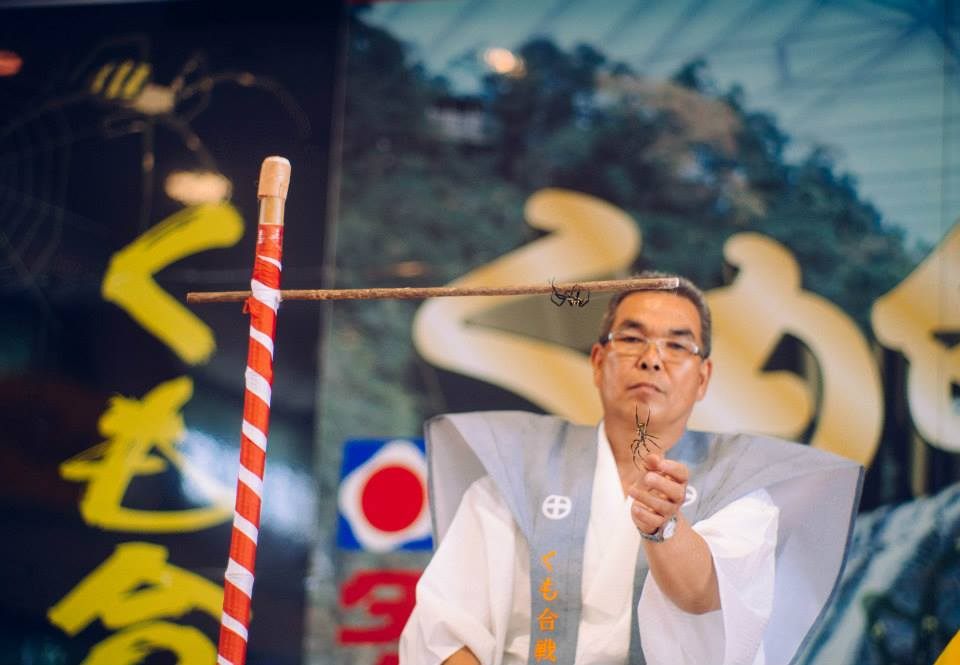
A judge encourages a hesitant spider as her opponent waits.
One spider (kamae) stands on the end of a horizontal, wooden pole. A judge places her opponent (shikake) a bit farther down the pole, and places his hand between them, ensuring they are both ready to rumble before allowing the fight to begin. He pulls his hand away and it’s on.
A spider can win a fight in three ways: she can bite her opponent on the abdomen; she can wrap her opponent’s abdomen in thread; or, if her opponent tries to bungee away, she can cut the rival’s thread, causing the loser to tumble to the padded platform below.
The judge has to keep a keen eye on the battle, both to declare a winner and to ensure the spiders don’t seriously damage each other. The majority of the fights are over within 10 seconds, as the judge reaches quickly into the fray to separate them and returns the loser to its disheartened-looking owner. The winner advances to the next round.
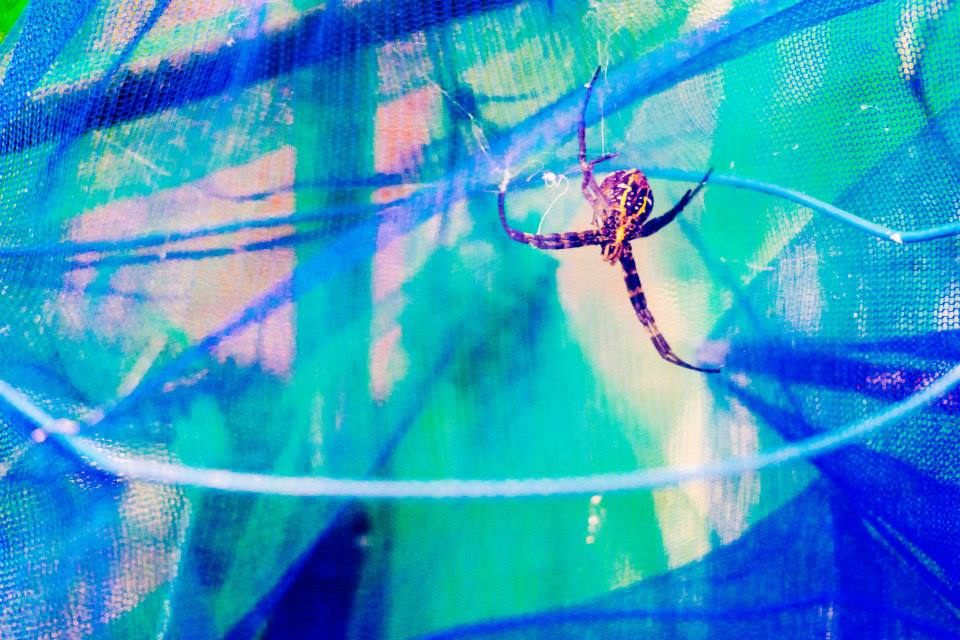
Female Kogane spider waits her turn for battle.
The spiders, all of which are female, are judged not only on their fighting skills but also on their beauty: color, patterning, and how well proportioned their figures are can all gain them points in a separate morning competition.
Between fights, spiders rest in mesh cages, in paper bags, or sit on sticks to be trotted through the crowd to the fighting poles. If you’re lucky, an owner may offer to allow their spiders to crawl on you.
While the battles certainly draw the crowds, it would be a shame to overlook the other spider-related activities on offer. You can admire paintings and drawings of spiders created by schoolchildren, have your photo taken as a spider judge in a your-face-here cutout, buy snacks emblazoned with the spider-battle logo, learn about the ecological importance of spiders, or enter a raffle to win spider-themed prizes.
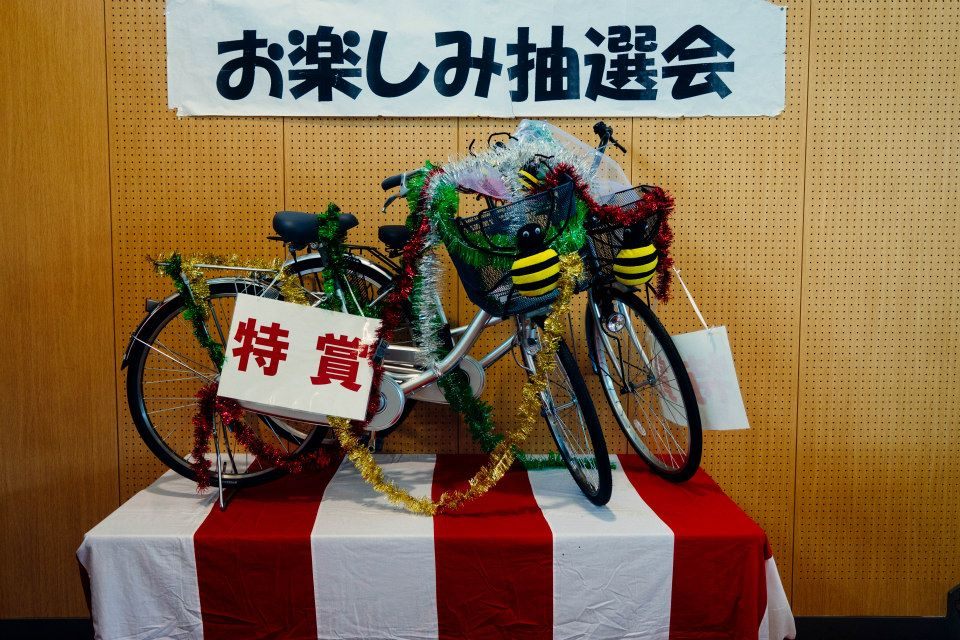
Grand prize: Spider-bedecked bicycles!
Spider battles are not unique to Kajiki. Spectator events involving spider-fighting have been recorded in many places including Singapore, Thailand, Malaysia, and Korea. In the Philippines, spider-fighting, which involves placing bets on potential winners, has even been linked to gambling addiction and children’s schoolwork suffering. (The Kajiki battles do not involve gambling.)
In many of these places spider-fighting, like other blood sports, is officially discouraged. In Kajiki, by contrast, the spider battles were honored in 1996 by being declared an Important Folk Cultural Property in Japan by the Agency for Cultural Affairs.
So forget watching sumo matches or kabuki plays, buying ceramics, or eating sushi—if you want to learn about a true Japanese cultural treasure, just look on the web.


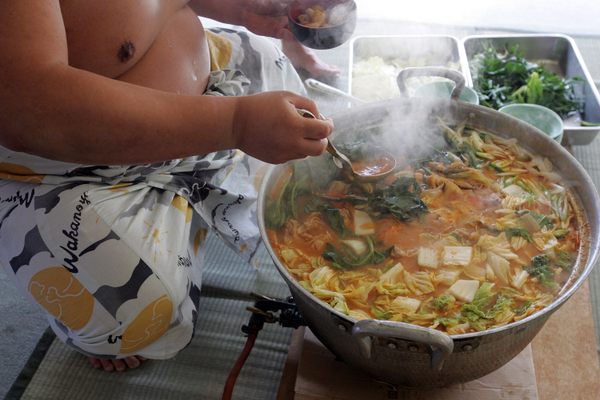






Follow us on Twitter to get the latest on the world's hidden wonders.
Like us on Facebook to get the latest on the world's hidden wonders.
Follow us on Twitter Like us on Facebook